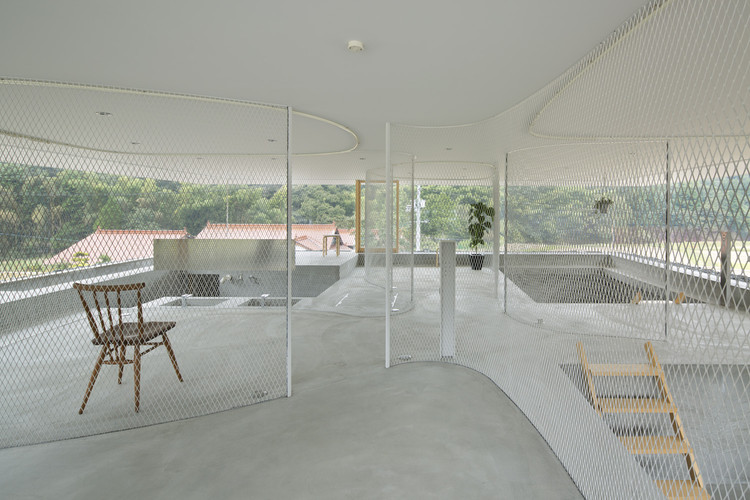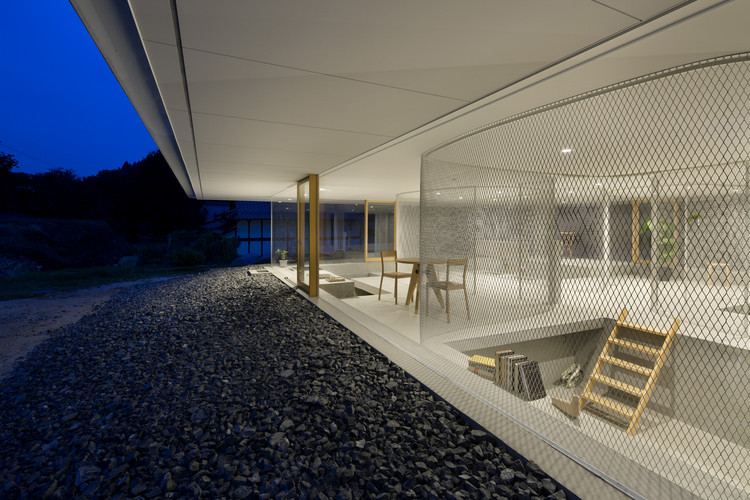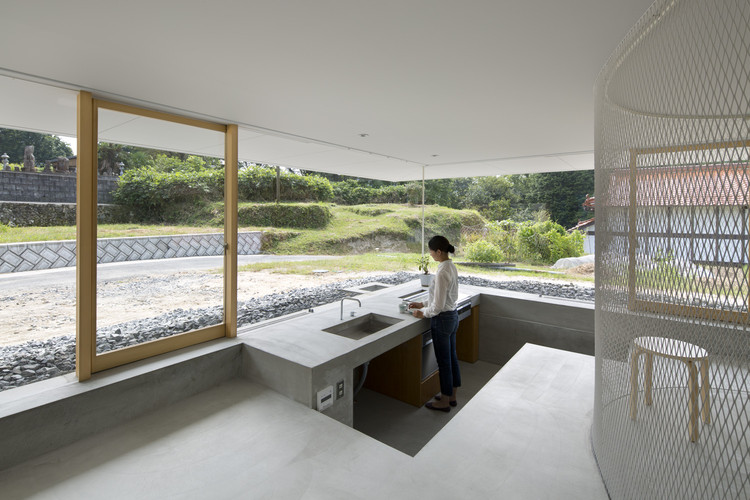
-
Architects: Suppose Design Office
- Area: 490 m²
-
Photographs:Toshiyuki Yano
-
Structure Design: Arup, Mitsuhiro Kanada, Kengo Takamatsu

Text description provided by the architects. One of the issues that emerged during the design process of this building was how to insert it in a peaceful rural landscape and how it interacts with the animals living in such a context. The concept of this project is to suspend a thin cover on a natural hill, equip it with furniture and in this way create a place where people and animals can meet under its shade.



The facade is made of transparent acrylic sheets on all four sides of the building, allowing the residents to get closer to nature while keeping the house warm due to this material’s high thermal insulation capability. Inside, the spaces are softly divided by expanded metal curved sheets allowing people to hang something or lean on it. These see-through partitions become guidelines for the furniture layout, and induce the residents to align things on it keeping the building tidy. This building uses light materials and organic shape interior dividers to further enhance its relationship with the landscape.

The space is composed by multiple levels with a maximum difference in height of 1000 mm that allows installing no handrails. Utilities and storage space are hidden under these levels, resulting in a very clean ground floor. The facilities’ floor level is partially underground to assure more privacy allowing the residents to see the sky only. At the same time, in the kitchen space, the level difference becomes a joint between the countertop and the ground, making it possible for a deer to stare at the residents preparing meals.

By extending the eaves equally, as much as the height of the acrylic facade, the thermo environment inside is improved and a shade is made outside, inducing the people to use the spaces inside and outside of the building in different ways according to the seasons and the hour of the day, blending their lifestyles into nature.

So far, the architectural essential elements have always been discrete, but nowadays as technology progresses the distinction between a wall, a window and a pillar becomes more vague, permitting architecture to become limitless.



















